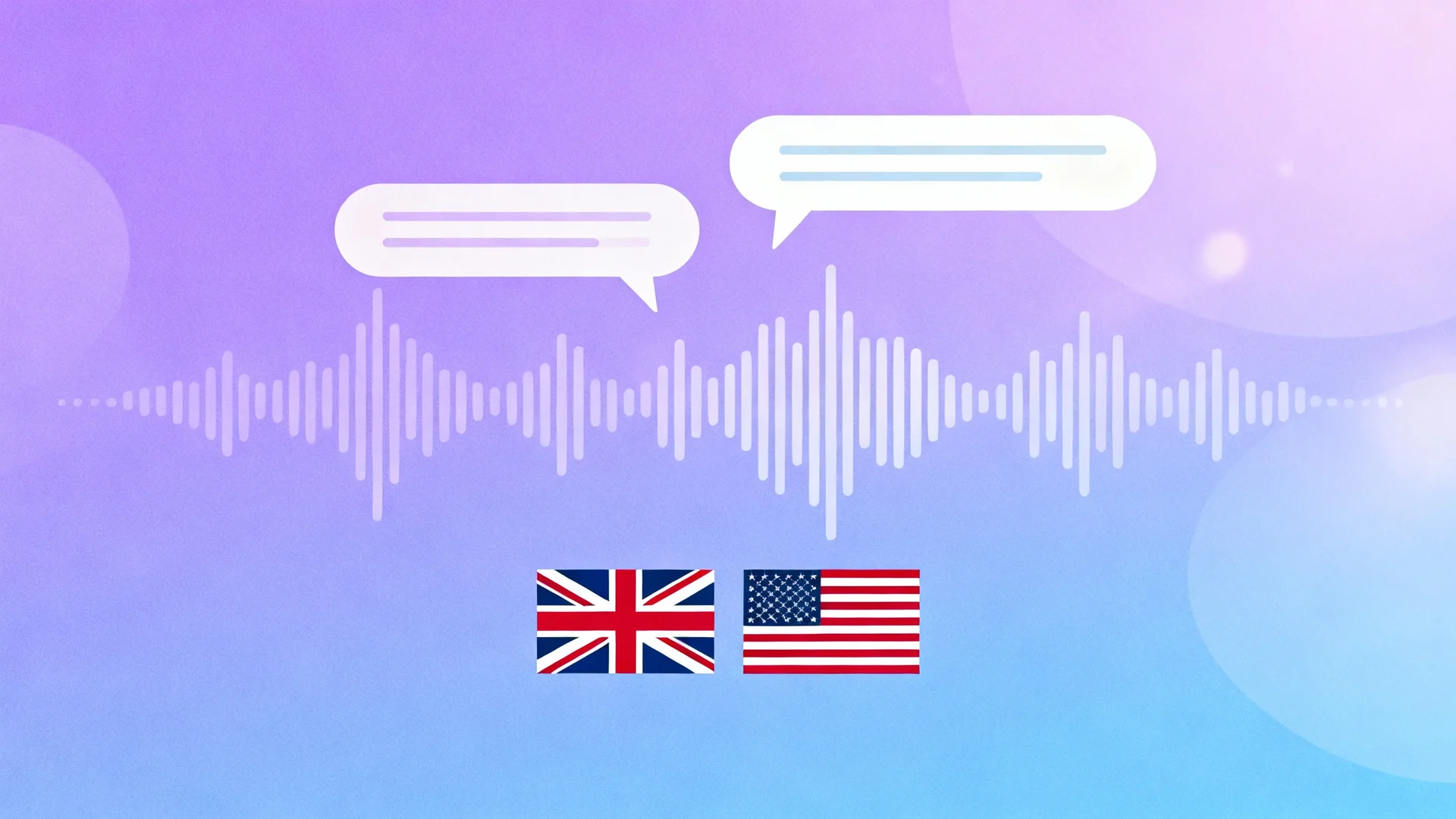Understanding Australian English
Australian English is a unique variety with distinctive vowel sounds, consonant features, and intonation patterns. While sharing similarities with British English, it has evolved its own character that sets it apart.
Key Features of Australian Pronunciation
1. The Australian 'I' Sound
One of the most recognizable features: /aɪ/ often sounds more like /ɑɪ/ or even /ɔɪ/:
- I → sounds like "oy"
- my → /mɑɪ/
- time → /tɑɪm/
- night → /nɑɪt/
2. The 'A' Sound
The /eɪ/ diphthong often starts from a more central position:
- day → /dæɪ/ (starts more like 'a' in 'cat')
- make → /mæɪk/
- great → /ɡræɪt/
3. Short Vowels
Australian short vowels are distinctly different:
- /ɪ/ can sound like /ə/: "milk" → /məlk/
- /e/ can sound like /i/: "bed" → /bid/
- /æ/ can sound like /e/: "bad" → /bed/
Rising Intonation: The Australian Question
Australians often use rising intonation (High Rising Terminal) even for statements:
- "I went to the shops?" (statement, not question)
- "It was really good?" (statement)
- "We're going tomorrow?" (statement)
This can make statements sound like questions to non-Australians.
The Broad vs. Cultivated Spectrum
Broad Australian
Strong, traditional features (think Steve Irwin):
- Very fronted /aɪ/ diphthong
- Strong vowel shifts
- Pronounced rising intonation
General Australian
Middle ground, most common:
- Moderate vowel shifts
- Some rising intonation
- Standard Australian features
Cultivated Australian
Closer to British RP:
- Less extreme vowel shifts
- More British-influenced features
- More formal intonation
Consonant Features
T-Flapping
Similar to American English, 't' between vowels softens:
- water → /ˈwɔːdə/
- better → /ˈbedə/
- city → /ˈsɪdi/
Non-Rhotic
Like British English, 'r' is not pronounced after vowels:
- car → /kɑː/
- park → /pɑːk/
- hard → /hɑːd/
L-Vocalization
The 'l' sound can become vowel-like at the end of words:
- school → /skuːw/
- Australia → /əˈstreɪljə/ or /əˈstreɪliə/
Australian Vocabulary and Abbreviations
Australians love shortening words with '-o' or '-ie' endings:
- afternoon → "arvo"
- breakfast → "brekkie"
- mosquito → "mozzie"
- barbecue → "barbie"
- Australian → "Aussie" /ˈɒzi/
Comparing with Other Accents
Australian vs. British
| Word | Australian | British |
|---|
| day | /dæɪ/ | /deɪ/ |
| I | /ɑɪ/ | /aɪ/ |
| no | /nəʊ/ | /nəʊ/ |
Australian vs. American
| Word | Australian | American |
|---|
| car | /kɑː/ | /kɑːr/ |
| dance | /dɑːns/ | /dæns/ |
| water | /ˈwɔːdə/ | /ˈwɑːdər/ |
Practice Exercises
Exercise 1: The /aɪ/ Diphthong
Practice these words with Australian pronunciation:
- my, I, time, night, flight, right
Exercise 2: Rising Intonation
Say these statements with rising intonation:
- "I went to the beach"
- "It was a great day"
- "We had a barbie"
Exercise 3: Aussie Slang
Practice common abbreviations:
- "Let's have brekkie"
- "See you this arvo"
- "The mozzies are terrible"
Common Words in Australian English
Everyday Phrases
- "G'day mate" - Hello friend
- "No worries" - You're welcome / That's okay
- "Reckon" - Think / suppose
- "Fair dinkum" - Genuine / true
- "She'll be right" - It'll be fine
Learning Resources for Australian English
Media:
- Australian news broadcasts (ABC News)
- Australian TV shows and movies
- Australian YouTube channels
Practice:
- Listen to Australian podcasts
- Watch Australian sports commentary
- Practice with Australian language exchange partners
When to Learn Australian English
Australian English is ideal if you:
- Plan to live, work, or study in Australia
- Work with Australian companies or clients
- Want to understand Australian media and culture
- Prefer a non-rhotic accent like British but with unique character
Conclusion
Australian English is a vibrant, distinctive variety with unique vowel sounds, characteristic intonation, and colorful vocabulary. Whether you're moving to Australia or simply want to understand this accent better, focus on the key vowel shifts, rising intonation patterns, and enjoy the friendly, laid-back character of Australian speech. No worries, mate—with practice, you'll have it down!
